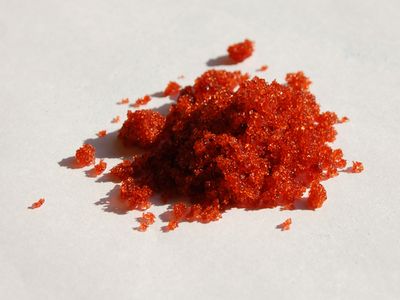Cobalt Nitrate: Properties, Applications, and Safety Guidelines
 Muhammad Azeem
17 Aug, 2025
5 mins read
36
Muhammad Azeem
17 Aug, 2025
5 mins read
36

Cobalt Nitrate (Co(NO₃)₂·6H₂O), also known as cobaltous nitrate hexahydrate, is an inorganic compound widely used in industrial and laboratory applications. With its vibrant red crystalline appearance and solubility in water, it serves as a key reagent in chemical synthesis, catalysis, and material production. This article explores the properties, uses, and safety considerations of Cobalt Nitrate, providing a detailed overview of its significance in modern chemistry.
Chemical and Physical Properties
Cobalt Nitrate Hexahydrate has the following characteristics:
- Chemical Formula: Co(NO₃)₂·6H₂O
- Molar Mass: 291.03 g/mol
- Appearance: Red or rose-colored crystalline solid
- Melting Point: 55°C (131°F) (decomposes upon further heating)
- Solubility: Highly soluble in water and ethanol
- Density: 1.87 g/cm³
These properties make it useful in various chemical processes, particularly where a soluble cobalt source is required.
Key Applications of Cobalt Nitrate
1. Industrial and Chemical Manufacturing
- Catalyst Production: Used in petroleum refining and organic synthesis.
- Pigment Manufacturing: A precursor for cobalt-based dyes and ceramics.
- Electroplating: Helps deposit cobalt coatings on metals for corrosion resistance.
For high-purity Cobalt Nitrate Hexahydrate (99.5% ACS Reagent Grade), trusted suppliers like Noah Chemicals provide laboratory-grade material.
2. Laboratory and Research Uses
- Analytical Chemistry: Acts as a standard in spectrophotometry.
- Material Science: Used in synthesizing cobalt oxide nanoparticles.
- Electrochemistry: Functions as an electrolyte in battery research.
3. Agricultural and Nutritional Supplements
- Animal Feed Additive: Provides essential cobalt for livestock (in controlled amounts).
- Fertilizer Component: Used in trace amounts to correct cobalt-deficient soils.
Health and Safety Considerations
While Cobalt Nitrate is less toxic than heavy metals like mercury, it still requires careful handling.
Potential Hazards
- Skin/Eye Contact: May cause irritation or allergic reactions.
- Inhalation: Can lead to respiratory issues with prolonged exposure.
- Ingestion: Harmful if swallowed, may cause nausea and organ damage.
Safety Precautions
- Personal Protective Equipment (PPE): Wear gloves, goggles, and lab coats.
- Ventilation: Use in a well-ventilated area or fume hood.
- Storage: Keep in a cool, dry place away from reducing agents.
- Disposal: Follow hazardous waste disposal regulations.
Environmental Impact and Regulations
- EPA Guidelines: Classified as a hazardous substance requiring controlled disposal.
- Water Contamination Risk: Toxic to aquatic life in high concentrations.
- Occupational Limits: OSHA mandates workplace exposure limits (PEL: 0.1 mg/m³ for cobalt).
Alternatives and Sustainable Practices
Where possible, industries are exploring:
- Non-Cobalt Catalysts: Nickel or iron-based alternatives.
- Recycling Cobalt: Recovering cobalt from spent batteries and industrial waste.
Conclusion
Cobalt Nitrate Hexahydrate remains a valuable chemical in industrial and research settings due to its versatility. However, proper handling and disposal are crucial to minimize health and environmental risks. For high-quality Cobalt Nitrate, suppliers like Noah Chemicals offer reliable ACS-grade products.
Written By:
Muhammad Azeem



Hotels at your convenience
Now choose your stay according to your preference. From finding a place for your dream destination or a mere weekend getaway to business accommodations or brief stay, we have got you covered. Explore hotels as per your mood.


